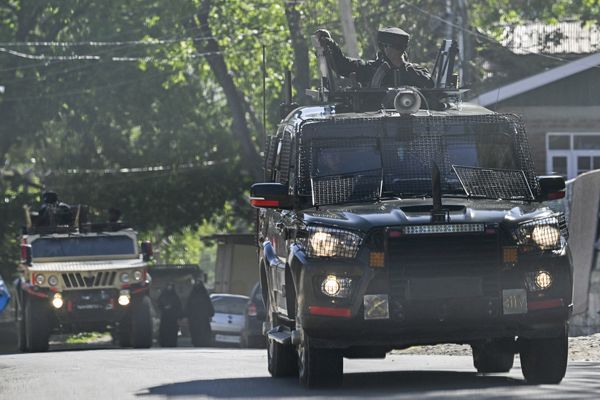
An easyJet plane carrying 190 passengers narrowly avoided crashing into a mountain range as it descended towards the Red Sea resort of Hurghada in Egypt on Monday.
The aircraft was just 771ft away from the mountain peak when an emergency crash alert was triggered. The captain, Paul Elsworth, has since been suspended.
This near disaster follows a plane crash in Pennsylvania on Sunday.
With aviation disasters seeming to rise, questions about the safety of air travel abound.
Here's everything we know, including whether air travel has become more dangerous.
How many plane crashes have there been in 2025?
We are three months into the year, yet Sunday's crash in Pennsylvania marks the fifth serious aviation accident in North America.
As well as the Canadian crash, at least four other major crashes have been reported so far in 2025:
Washington DC
A commercial jetliner and an Army helicopter collided near the US capital on January 29, killing 67 people.
It was the deadliest plane crash in the US since November 12, 2001, when American Airlines Flight 587 crashed in Queens, New York, shortly after take-off from John F Kennedy International Airport. The accident killed 260 people on board and five on the ground.

Philadelphia
Just two days after the Washington tragedy, another aviation disaster happened when a medical transport plane crashed into Philadelphia homes on January 31.
Six people on board and another person on the ground died when the plane smashed into the ground and burst into flames.
Alaska
In February, 10 people died — all the people on the flight — when a small commuter jet crashed on sea ice in Alaska.
The Cessna Grand Caravan aircraft, operated by regional carrier Bering Air, was en route from Unalakleet to Nome when it disappeared from the radar.
The plane, carrying nine passengers and a pilot, went down in Norton Sound, approximately 34 miles south-east of Nome, a coastal city in western Alaska.
The remains of all onboard were discovered the next day. It was one of the deadliest plane crashes in the state in 25 years.
Toronto
Eighteen people were injured at Toronto Pearson Airport in Canada on February 17 when a Delta Air Lines jet from Minneapolis crashed and overturned while landing.
It was the latest such aviation incident since the start of the year.
The Toronto airport's chief executive said all 80 passengers and crew had survived.
"We are very grateful there was no loss of life and relatively minor injuries," said Deborah Flint of the Greater Toronto Airports Authority.
One child and two adults were critically injured in the crash, according to emergency services.
Striking footage shared on social media showed the Delta Air Lines jet upside down with firefighters hosing the outside of the plane.
In one clip, a passenger shared footage of someone helped from the crashed plane on a snow-covered tarmac. “We’re in Toronto. We just landed. Our plane crashed. It’s upside down,” they explained through rasped breaths.
Pennsylvania
A Beechcraft Bonanza plane carrying five people crashed into a retirement home car park in Manheim Township and exploded into flames on Sunday, March 9
All five people on board survived and were taken to hospital, though authorities did not disclose the specifics of their injuries. Their conditions remained unknown at the time of writing.
Manheim Township Fire Chief Scott Little reported that five cars were destroyed in the crash, but no one on the ground was hurt.
The plane had taken off from Lancaster Airport at 3pm (local time), and shortly afterwards, someone on board reported an open door and requested permission to return to the airport, according to air traffic control radio communications. Mr Little confirmed that federal authorities would investigate whether the open door played a role in the incident.
Other incidents
Several smaller aviation incidents have also been reported.
A United flight from Chicago was forced to return to O’Hare Airport for an unexpected issue in the cockpit on February 1. The plane’s wing struck an aircraft tug at the airport, critically injuring the vehicle’s driver, authorities said.
A Japan Airlines plane also clipped a parked Delta plane while taxiing at the Seattle airport on February 5. A United Airlines plane caught fire during take-off at Houston airport after an engine problem on February 2.
What caused the crashes?
There is no official explanation for the major crashes that resulted in fatalities.
The US National Transportation Safety Board (NTSB) and the Federal Aviation Administration (FAA) are conducting in-depth investigations. However, it may take more than a year before the official reports are released.
What have people in America said?
Reports indicate that the newly formed Donald Trump administration began dismissing several hundred Federal Aviation Administration (FAA) employees following the Washington incident in January.
The National Air Traffic Controllers Association (NATCA) said it was "analysing the effect of the reported federal employee terminations on aviation safety, the national airspace system, and our members."
The association has warned of a shortfall in air traffic controllers, with federal officials raising concerns for years about an overburdened and understaffed system.
Is there evidence to show that flying is becoming more dangerous?
The recent spate of aviation incidents and near-misses has understandably raised concerns about flight safety. However, experts reassure that there is no cause for alarm regarding the future of air travel.
Transportation Secretary Sean Duffy told Fox News in February that air travel was "way safer than travelling in a car and train. This is the safest mode of transportation”.
The National Safety Council estimates that Americans have a one in 93 chance of dying in a motor vehicle crash, while deaths on planes are too rare to calculate the odds.
Research also indicates that the number of accidents does not necessarily increase each year.
A quick scan of the Bureau of Aircraft Accident Archives data for this issue suggests we are seeing a decline in the deaths per year.
The highest number of aviation deaths in one year on record, since the understandably high crash rate of the Forties (Second World War) was 1972, when 3,346 died, the data states. But this was not an anomaly, with the average number of deaths per year only regularly falling below 2,000 in the 1990s.
The deadliest plane crash in history occurred on March 27, 1977, when two Boeing 747s collided on the runway at Tenerife Airport in Spain. The crash killed 583 people.
Since then, the number of fatalities has steadily declined, and by the 2010s, it became rare for the death toll to exceed 1,000.
In 2024, the number of aviation deaths stood at 416, higher than the 229 in 2023 but consistent with the averages of previous years: 578 in 2019, 463 in 2020, 414 in 2021, and 357 in 2022.
The last time fatalities surpassed 1,000 was in 2018, when two Airbus planes crashed in Ethiopia and Indonesia.
In 2023, 35.3 million scheduled commercial flights took place globally, according to the Air Transport Action Group. This makes air travel statistically safer than both rail and road transport.
For comparison, the UK Government reported in 2023 that more than 1,500 people died on the roads every year in the UK.
Is flying becoming more perilous due to climate change?
Aviation has long been considered a significant contributor to climate change. However, according to a National Geographic article in July 2024, worsening weather is increasingly affecting flights as well.
The study highlighted that turbulence — caused by stronger winds, a faster jet stream and more frequent storms — was making air travel bumpier. There are also growing reports of flooded runways and rising surface temperatures, making it more difficult for planes to take off.
That said, these changes have not yet had a significant impact on the number of accidents or fatalities.







